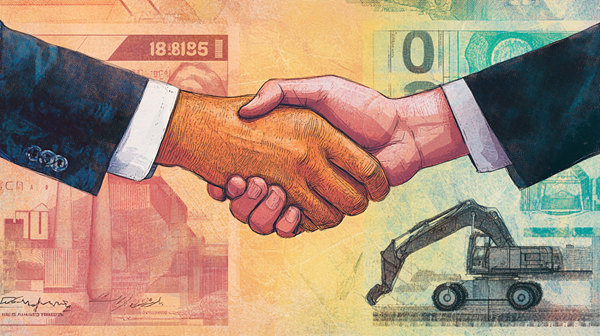Learn how Aussie businesses use instant asset write-offs and smart equipment finance to save thousands. Essential insights for success.
Key Takeaways
- Write-off cap remains under review: As of April 2025, the Instant Asset Write-Off threshold is proposed to stay at $20,000, with potential extensions pending federal budget announcements.
- Applies to small businesses: Only businesses with an aggregated turnover of less than $10 million are eligible for the current write-off scheme (Source: ATO, 2025).
- Claim applies per asset: You can claim multiple eligible assets under $20,000 each, not just one.
- Equipment finance qualifies: Chattel mortgages and lease finance still allow you to claim the asset upfront if it’s installed and ready for use by 30 June 2025.
- EOFY advantage: Timing purchases before EOFY can optimise tax benefits, especially if combined with finance.
Introduction
With tax season around the corner, now's the time to sharpen your business strategy. The Instant Asset Write-Off (IAWO) and equipment finance can be a powerful combo to improve your cash flow, reduce your tax, and grow your operations. Whether you're upgrading tools, purchasing vehicles, or investing in new machinery, understanding how these schemes interact could save you thousands.
Let’s break down exactly how the write-off works in 2025, what’s changed, how it ties in with equipment finance, and what actions your business should take before 30 June.
What is the Instant Asset Write-Off?
The Instant Asset Write-Off allows eligible Australian businesses to claim the full cost of eligible assets upfront in the year the asset is first used or installed ready for use.
2025 Status Update:
- Cap: $20,000 per asset (under proposed legislation).
- Eligibility: Business turnover under $10 million.
- Deadline: Assets must be first used or installed ready for use by 30 June 2025.
What can you claim?
- Tools and machinery
- Business-use vehicles
- Office furniture and IT equipment
- Commercial appliances
According to the Australian Taxation Office (2025), over 3.8 million small businesses have claimed the write-off since its inception.
How Equipment Finance Works with the Write-Off
You don’t need to pay for the asset in full to claim the write-off. If you finance it correctly, you can still access the tax benefits upfront.
Types of finance that qualify:
- Chattel Mortgage: You own the asset from day one, so you can claim depreciation (or full write-off).
- Hire Purchase: Treated similarly to a chattel mortgage if structured correctly.
- Finance Lease: Doesn’t allow immediate ownership, so may not be eligible for the IAWO.
Why this matters
Pairing asset finance with the write-off allows you to:
- Conserve cash flow
- Acquire better-quality equipment
- Get a larger tax deduction this year
Data from the ABS (2024) shows a 19% rise in financed equipment purchases leading up to EOFY, driven largely by tax-time strategies.
Timing Your Purchase Before EOFY
With the 30 June deadline looming, timing is critical. It’s not enough to buy the asset — it needs to be ready for use.
Make sure:
- The asset is delivered and installed by 30 June 2025.
- You have documentation showing it’s operational.
- You’ve checked it meets the sub-$20k threshold.
Combining the Write-Off with Other Tax Strategies
Smart businesses combine the IAWO with other deductions to maximise EOFY outcomes.
Strategies that work well:
- Prepay expenses: Rent, insurance, or utilities.
- Defer income: If cash flow allows, push revenue past EOFY.
- Stock management: Write down obsolete stock.
- Super contributions: Maximise deductible super payments for yourself or employees.
In 2023-24, small businesses saved an average of $11,400 by combining tax planning strategies, including the IAWO (CPA Australia Tax Report 2024).
Industry-Specific Considerations
Some sectors are more active in using the write-off and finance combo due to high equipment needs.
Trades and Construction:
- Utes, trailers, power tools
- Commonly financed under chattel mortgages
Medical and Allied Health:
- Diagnostic machines, dental chairs
- Finance often structured to meet ATO requirements for depreciation
Hospitality:
- Commercial kitchen equipment, POS systems
- Instant deduction helps offset seasonal downturns
What to Watch in 2025
The write-off scheme is currently under review, and the upcoming Federal Budget in May 2025 could bring:
- A new cap (e.g., return to $150,000 like in 2020 COVID stimulus)
- Broader eligibility
- Extended or permanent schemes
Stay informed by checking updates from the ATO and Federal Treasury websites.
Common Mistakes to Avoid
Even well-meaning businesses sometimes get it wrong.
Watch out for:
- Assets not installed by 30 June
- Claiming non-eligible financed assets (like those under an operating lease)
- Incorrect asset valuations (GST-exclusive values only apply if you're GST-registered)
- Not consulting an accountant — especially if bundling other strategies
FAQs
- Can I claim the write-off if I finance equipment with a loan?
Yes — if you use a chattel mortgage or similar, and the asset is ready for use by 30 June. - Does the $20,000 limit include GST?
If you’re GST-registered, the limit is exclusive of GST. If not registered, it's inclusive. - Can I claim more than one asset?
Yes — the threshold is per asset, not total spend. - What happens if I buy now but install after June 30?
You’ll miss out on the write-off this financial year. Timing is critical. - Can sole traders and partnerships claim the write-off?
Yes, as long as turnover is under $10 million and the asset is used for business.
Conclusion
The Instant Asset Write-Off and equipment finance are a powerful pair when used right. As we approach EOFY 2025, reviewing your asset needs, planning finance, and acting early could mean a lower tax bill and better equipment in your business. With the cap potentially changing, and lenders and suppliers busier than ever in Q2, the time to act is now. Make sure your assets are installed, documented, and ready to work before 30 June to claim your full benefit.


